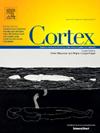Metacognition in motion: The interplay between motor evidence and visual information in shaping sensorimotor confidence
IF 3.3
2区 心理学
Q1 BEHAVIORAL SCIENCES
引用次数: 0
Abstract
This study examines the role of internal motor signals and visual information in the detection of and confidence in Partial-errors (PEs), subtle endogenous motor corrections. Using electromyographic (EMG) recordings, we captured motor activations during a conflict task in which participants reported the presence of PEs and rated their confidence. Two experiments were conducted: Experiment 1 provided visible visual conflict through supraliminal primes, while Experiment 2 reduced visual feedback using subliminal primes. In both Experiments, participants demonstrated limited PE detection and above-chance metacognitive efficiency. Notably, when participants reported the absence of a PE, confidence was lower when a PE was actually present (unaware PE) compared to when there was no PE (correct rejection), suggesting implicit sensitivity to motor activation. Detection and confidence were systematically influenced by motor signals, with larger PE amplitudes and longer correction times leading to higher detection rates and confidence levels. However, a metacognitive bias emerged: confidence was paradoxically lower for detected PEs than for undetected ones, despite strong motor evidence. Visual information modulated the reliance on motor signals. In Experiment 2, where subliminal priming reduced visual feedback, motor signals had a more pronounced influence on both detection and confidence. These findings highlight the complementary roles of internal motor signals and external visual information in shaping sensorimotor confidence.
运动中的元认知:运动证据和视觉信息在形成感觉运动自信中的相互作用
本研究探讨了内部运动信号和视觉信息在局部误差(pe)检测和置信度中的作用,这是一种微妙的内源性运动纠正。使用肌电图(EMG)记录,我们在冲突任务中捕获运动激活,参与者报告pe的存在并评估他们的信心。实验1通过阈上启动产生视觉冲突,实验2通过阈下启动减少视觉反馈。在这两个实验中,参与者表现出有限的PE检测和高于机会的元认知效率。值得注意的是,当参与者报告没有PE时,与没有PE时(正确拒绝)相比,PE实际存在时(未意识到PE)的信心更低,这表明对运动激活的隐性敏感性。检测和置信度受到运动信号的系统性影响,较大的PE振幅和较长的校正时间导致更高的检测率和置信度。然而,元认知偏差出现了:尽管有强有力的运动证据,但检测到的pe的置信度却比未检测到的pe低。视觉信息调节了对运动信号的依赖。在实验2中,当阈下启动减少视觉反馈时,运动信号对检测和信心都有更明显的影响。这些发现强调了内部运动信号和外部视觉信息在形成感觉运动信心中的互补作用。
本文章由计算机程序翻译,如有差异,请以英文原文为准。
求助全文
约1分钟内获得全文
求助全文
来源期刊

Cortex
医学-行为科学
CiteScore
7.00
自引率
5.60%
发文量
250
审稿时长
74 days
期刊介绍:
CORTEX is an international journal devoted to the study of cognition and of the relationship between the nervous system and mental processes, particularly as these are reflected in the behaviour of patients with acquired brain lesions, normal volunteers, children with typical and atypical development, and in the activation of brain regions and systems as recorded by functional neuroimaging techniques. It was founded in 1964 by Ennio De Renzi.
 求助内容:
求助内容: 应助结果提醒方式:
应助结果提醒方式:


